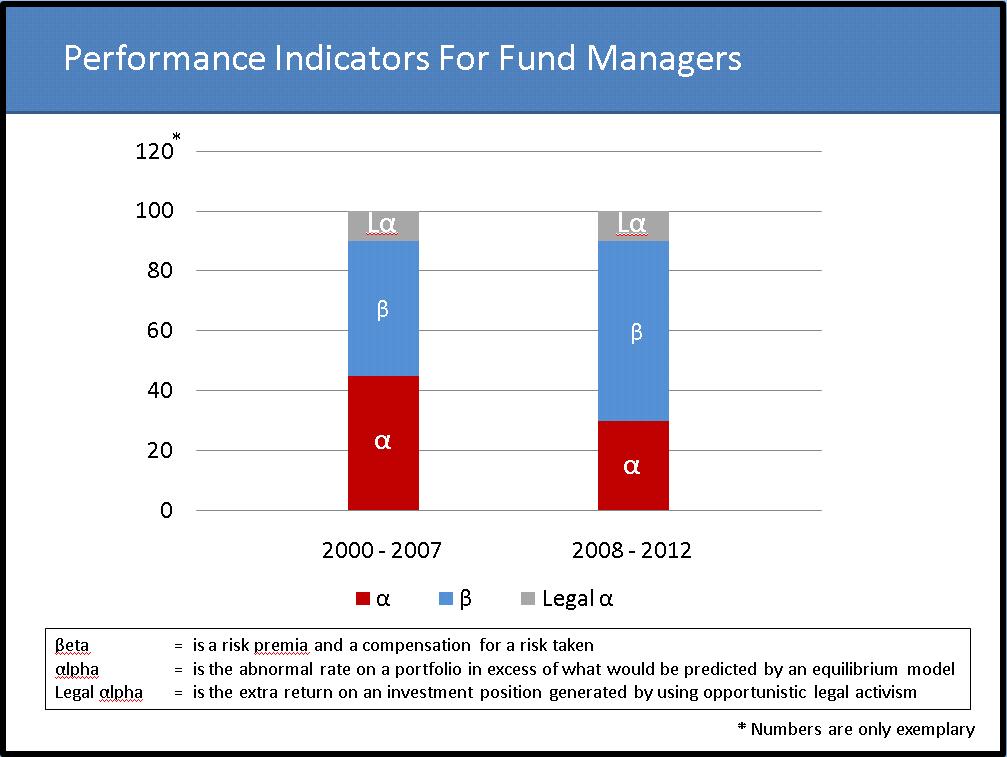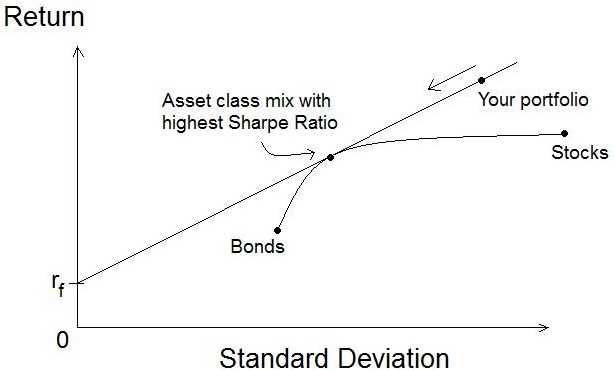Difference Between Beta and Standard Deviation
Expected risk and expected return are the two key determinants of share/security prices. In general, the riskier an investment, the greater the expected average return. Practically speaking, risk is how likely you are to lose money, and how much money you could lose. Statistically, the best way to measure this is the variability in the price of a fund over time. Variability in price can be described as either beta or standard deviation. Beta is a measure of the fund’s volatility relative to other funds, while standard deviation is a measurement of the spread in the fund share price over time. On the contrary, standard deviation describes only the fund in question, not how to compares to the index or to other funds. Volatility, however, is only one type of risk. Other risks not measured by beta and standard deviation, include bankruptcy, illiquidity, and consistent poor performance. Unfortunately, there is no way to quantitatively measure these risks. Let’s take a detailed look at the two volatility measures used in risk analysis.
What is Beta?
Beta measures the risk (volatility) of an individual asset relative to the market portfolio. Beta aims to gauge an investment’s sensitivity to market movements. It is a measure of the fund’s volatility relative to other funds. It is not an absolute measure of volatility; it measures a stock’s volatility relative to the market as a whole. Therefore, beta measures how movement in the stock price relates to the changes in the entire stock market. It is the average change in percentage in the value of the fund accompanying a 1% increase or decrease in the value of the S&P 500 index. For example, a stock with a beta of 1.5 goes up about 50% more than the index when the market goes down. Similarly, a stock with a beta of 2.00 experiences price swings double than those of the broader market. An S&P index fund, by definition, has a beta of 1.0.
What is Standard Deviation?
Standard deviation is the most widely used statistical measure of spread which essentially reports a fund’s volatility. The volatility of a single stock is commonly measured by its standard deviation of returns over a recent period. The standard deviation of a stock portfolio is determined by the standard deviation of returns for each individual stock along with the correlations of returns between each pair of stock in the portfolio. It includes both the unique risk and systematic risk. Higher standard deviations are generally associated with more risk. If you scale the standard deviation of one market against another, you obtain a measure of relative risk. The funds with standard deviations of their annual returns greater than 16.5 are more volatile than average.
Difference between Beta and Standard Deviation
Definition of Beta vs. Standard Deviation
– Both Beta and Standard deviation are two of the most common measures of fund’s volatility. However, beta measures a stock’s volatility relative to the market as a whole, while standard deviation measures the risk of individual stocks. Standard deviation is a measure that indicates the degree of uncertainty or dispersion of cash flow and is one precise measure of risk. Higher standard deviations are generally associated with more risk. Beta, on the other hand, measures the risk (volatility) of an individual asset relative to the market portfolio.
Calculation
– Beta is the average change in percentage in the value of the fund accompanying a 1% increase or decrease in the value of the S&P 500 index. An S&P index fund, by definition, has a beta of 1.0. A beta greater than 1.0 means greater volatility than the overall market, while a beta below 1.0 accounts for less volatility. Standard deviation is defined as the square root of the mean of the squared deviation, where deviation is the difference between an outcome and the expected mean value of all outcomes.
Example
– A stock with a 1.50 beta is significantly more volatile than its benchmark. It is expected to go up about 50% more than the index when the market goes down. Similarly, a stock with a beta of 2.00 experiences price swings double than those of the broader market. Standard deviation can be used as a measure of the average daily deviation of share price from the annual mean, or the year-to-year variation in total return. Higher standard deviations are generally associated with more risk and lower standard deviations mean more return for the amount of risk acquired.
Beta vs. Standard Deviation: Comparison Chart
Summary of Beta vs. Standard Deviation
Both Beta and Standard deviation are two of the most common measures of fund’s volatility. However, beta is a measure of the fund’s volatility relative to other funds, while standard deviation describes only the fund in question, but not how it compares to the index or to other funds. Therefore, investment with higher standard deviations is generally associated with more risk, while investment with lower standard deviation yields modest returns. On the contrary, a beta greater than 1.0 means greater volatility than the overall market, while a beta below 1.0 accounts for less volatility.
- Difference Between Caucus and Primary - June 18, 2024
- Difference Between PPO and POS - May 30, 2024
- Difference Between RFID and NFC - May 28, 2024
Search DifferenceBetween.net :
Leave a Response
References :
[0]Arffa, Robert C. Expert Financial Planning: Investment Strategies from Industry Leaders. Hoboken, New Jersey: John Wiley & Sons, 2001. Print
[1]Damodaran, Aswath. Strategic Risk Taking: A Framework For Risk Management. London: Pearson, 2007. Print
[2]Constas, Micheal and Jae K. Shim. Investment Sourcebook. Abingdon, UK: Taylor & Francis, 2001. Print
[3]Image credit: https://commons.wikimedia.org/wiki/File:Sharpe_ratio_graph.jpg
[4]Image credit: https://commons.wikimedia.org/wiki/File:Performance_Indicators_for_Fund_Managers.JPG



